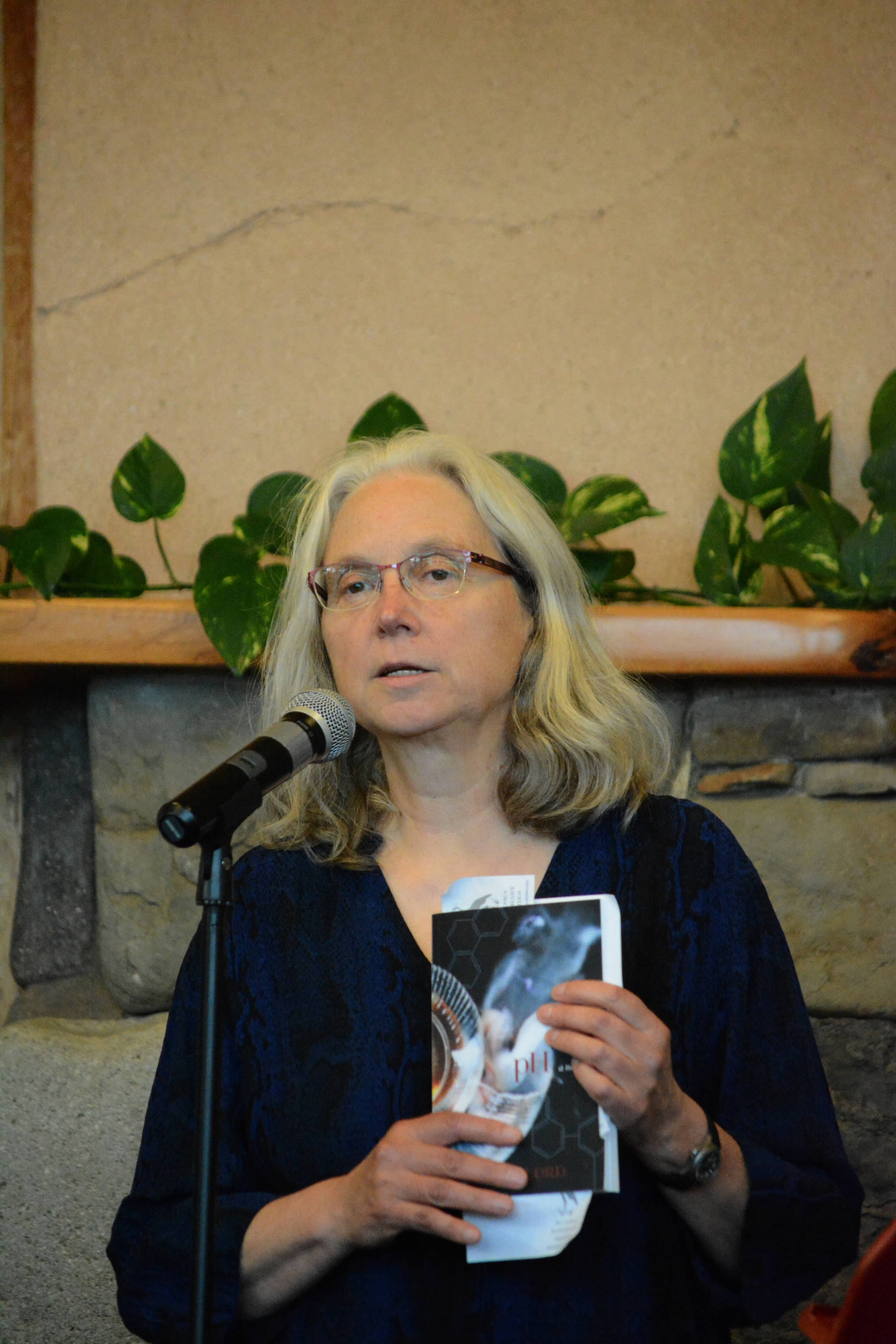Science fiction as predictive literature has its limits, but the writer Frederik Pohl noted one value to the genre: it provides the emotional content of the futures planners posit for us to see if we want to live in them. In that context, Nancy Lord’s latest book and her first published novel, “pH,” (WestWinds Press-Alaska Northwest Books/Graphic Arts, September 2017, $16.99 paperback) imagines the implications of ocean acidification, told in a witty, but cautionary, tale with scientists and an artist as central characters.
Though it skates close to the work of, say, the science fiction writers Kim Stanley Robinson or William Gibson, “pH” doesn’t quite have the tone of modern science fiction. As Lord said at a book launch reading on Sept. 15 at the Homer Public Library, it’s fiction about science.
“In this case, you’re combining real science with a story,” she said at the talk. “I started speculating about what I imagined it would be in the near future. As time went on, reality overran me.”
“pH” in the title refers to the scientific term for the amount of acidity in a liquid, in this case the world’s oceans. Research into increased amounts of carbon dioxide in the earth’s atmosphere led to the intriguing discovery that some carbon dioxide had been absorbed by our planet’s oceans, thus lessening the impact of the greenhouse gas on global warming and climate change. The bad news is … well, this is how Lord explains the issue, in a scene where Helen, a graduate student, teaches Annabel, an artist, about ocean chemistry while they’re on an oceanographic research expedition.
“In the ocean, CO2 reacts with seawater. It forms carbonic acid, which releases these hydrogen ions and reduces the pH. The hydrogen ions combine with carbonate ions to form bicarbonates. Then there are fewer carbonate ions left to make calcium carbonate, the major building blocks need by shell builders,” Lord writes.
Some of those shell builders include pteropods, microscopic creatures salmon and other fish find tasty. No pteropods, no salmon.
Lord started writing “pH” about 2012 after experiencing life aboard a working research vessel, Tiglax, the ship of the Alaska Maritime National Wildlife Refuge homeported in Homer. Her book on climate change, “Early Warming,” 2011, had a chapter on ocean acidification.
“It really was the most interesting part of the book for me. That was my grounding in that particular issue. It seems to me that potentially was more serious an issue than climate change or global warming,” Lord said in a phone interview.
In 2012, Lord got a fellowship to attend a scientific conference on ocean acidification in Monterey Bay, Calif., and kept up with the science. Next week, Lord will talk about her book at a meeting with the Alaska Ocean Acidification Network, a scientific group studying the topic. Lord finished “pH” in 2015, and after her former agent rejected it, sold the novel on her own to WestWinds Press – Alaska Northwest Books.
Though it would be easy to lapse into didacticism heavily flavored with expository lumps, Lord avoids that with a novel that’s part scientific thriller, part romance and part a coming-of-age book. Writing in multiple viewpoints, generally with one character’s perspective per chapter, she follows Ray, a scientist with the fictitious University of the North School of Ocean Sciences.
Helen, a graduate student having an affair with her mentor, Jackson, another oceanographer and Ray’s nemesis, brings the romantic tension, but she’s more complex than that. She’s also Inupiaq, a person raised outside her culture trying to understand her heritage.
Annabel, a 60-something artist with woo-woo tendencies but also an immense joy of living, stands in as the naive, non-scientist who understands more than she pretends.
“That was my strategy, to have a character who didn’t know things so things could be explained to that character,” Lord said. “I was hoping to show the parallels between science and art. She was just a fun character to develop.”
Ray’s daughter, Aurora, presents the future of the book and of the ominous overtones of a world being changed in ways we don’t fully know. What that future will be becomes the continuing sound of the book after the bell has been rung.
“The science is …. I was trying to be slightly speculative,” Lord said. “Things are more serious than I portrayed it. They’re definitely seeing the thinning in the pteropod shells and the dissolution. …It’s looking worse in terms of the acidification advancing and affecting things. The effects are uneven.”
Lord recently returned from a book tour and writing workshop in Kodiak. Next month she visits Portland for a signing at Powell’s Books and an appearance at the Pacific Northwest Booksellers Association, a gathering of booksellers and writers. Lord has received good reviews in “Foreword” and “The Brooklyn (New York) Rail,” which says “The science is skillfully interwoven with a compelling plot and a cast of well-wrought characters.”
That’s also what readers have told her, Lord said.
“People have told me they feel like they were learning while they were being entertained,” Lord said. “I wanted to get it into the world. I’ve been pretty happy so far.”
Reach Michael Armstrong at michael.armstrong@homernews.com.


